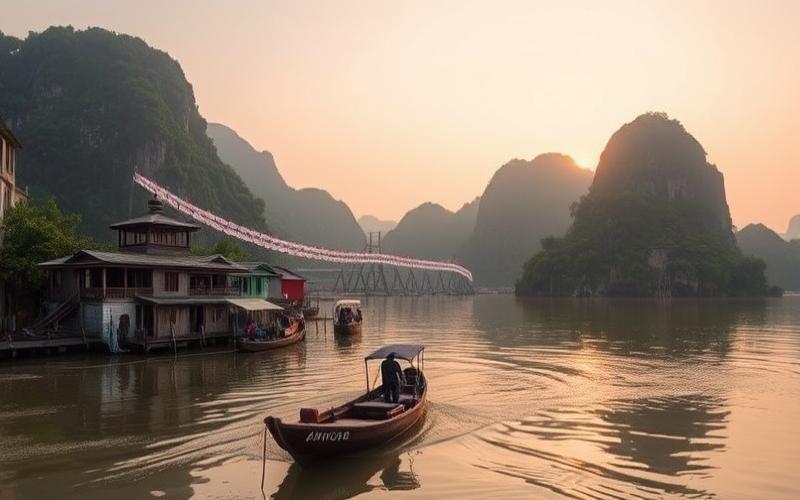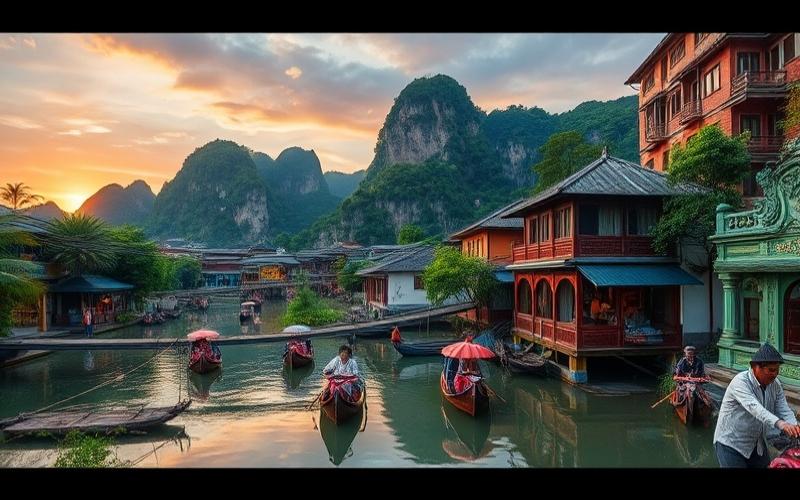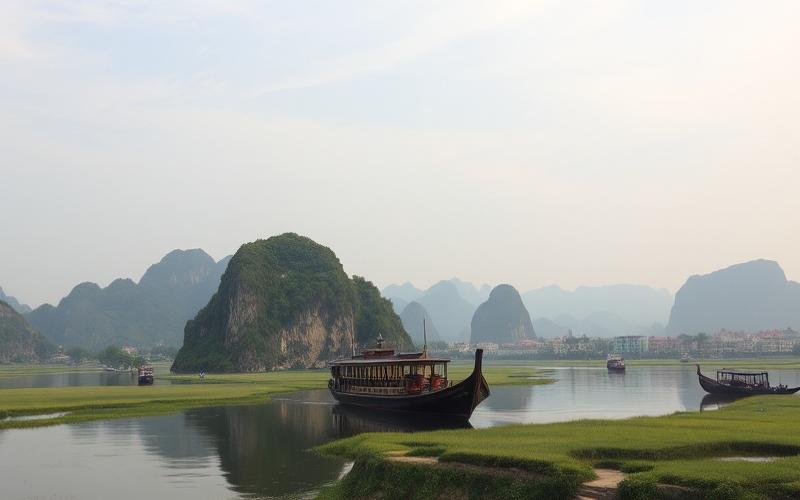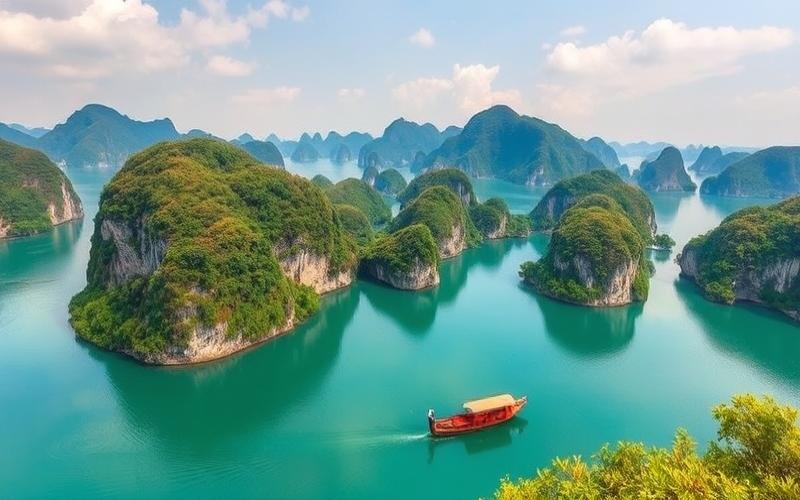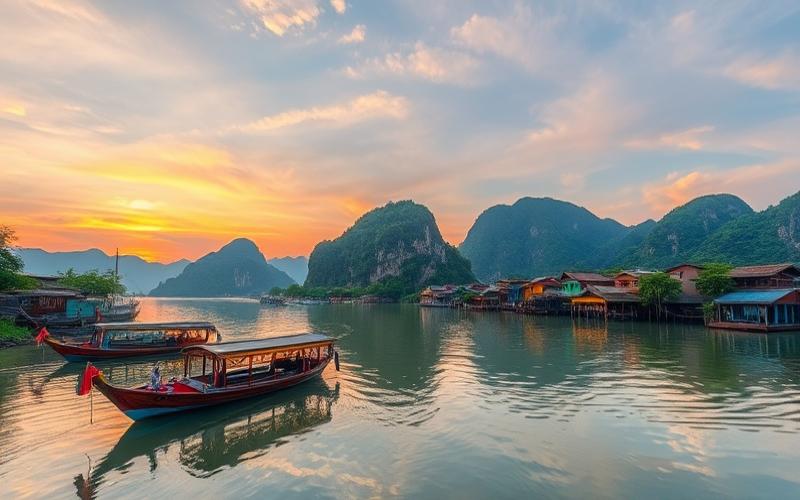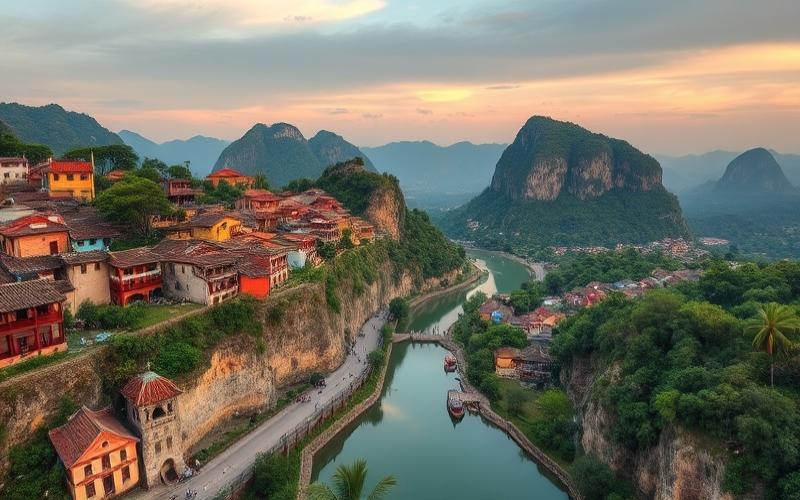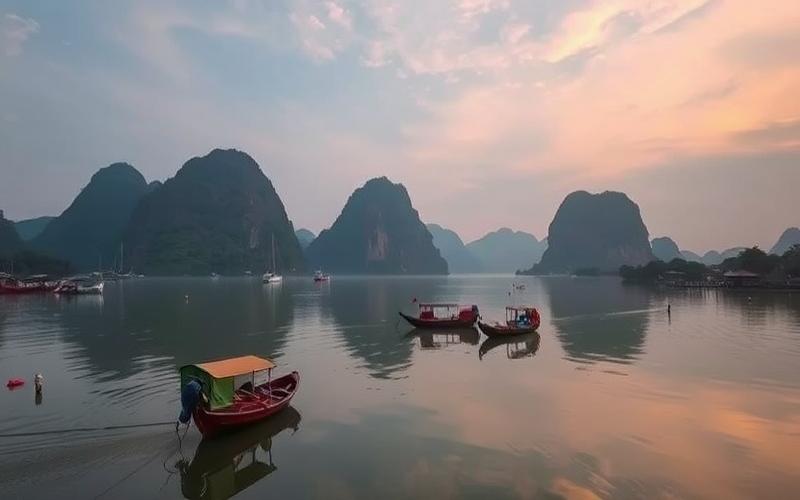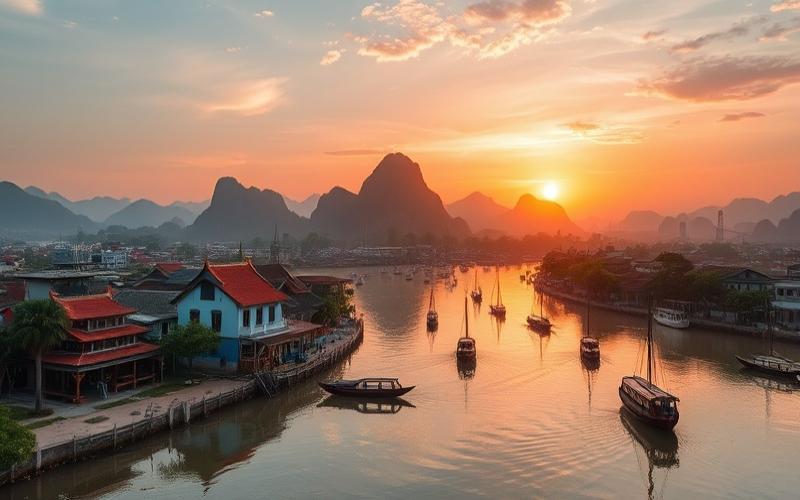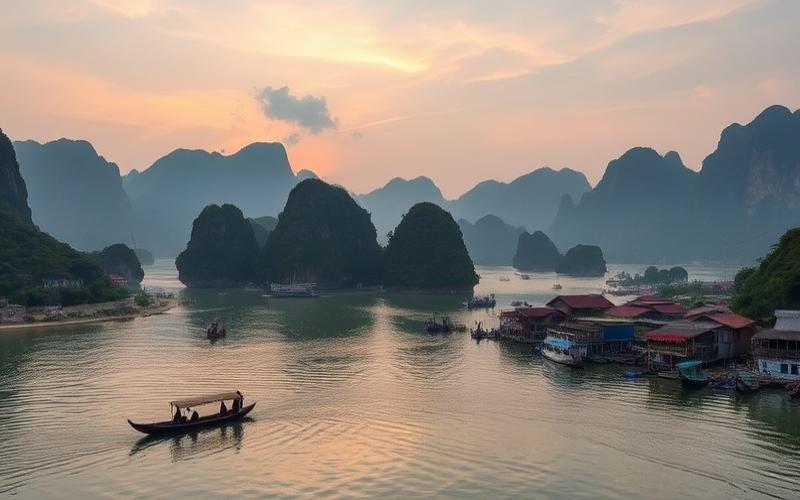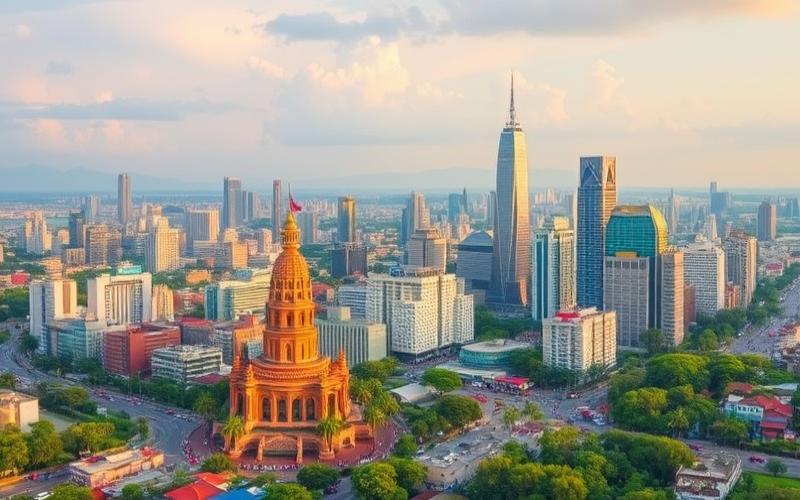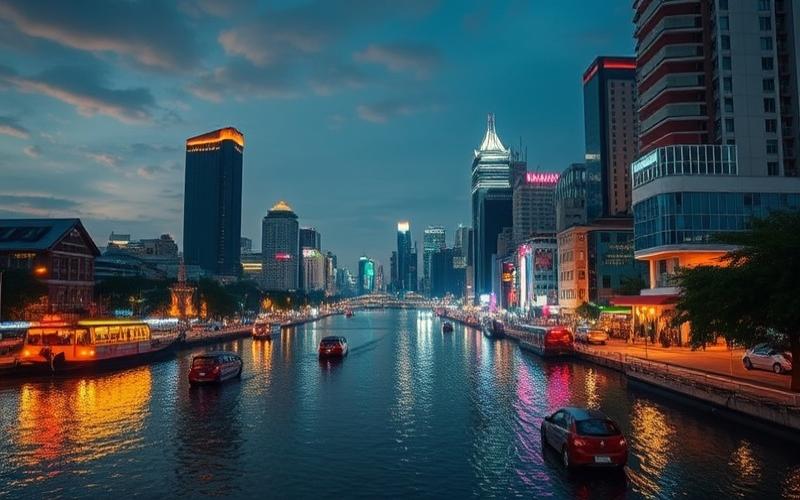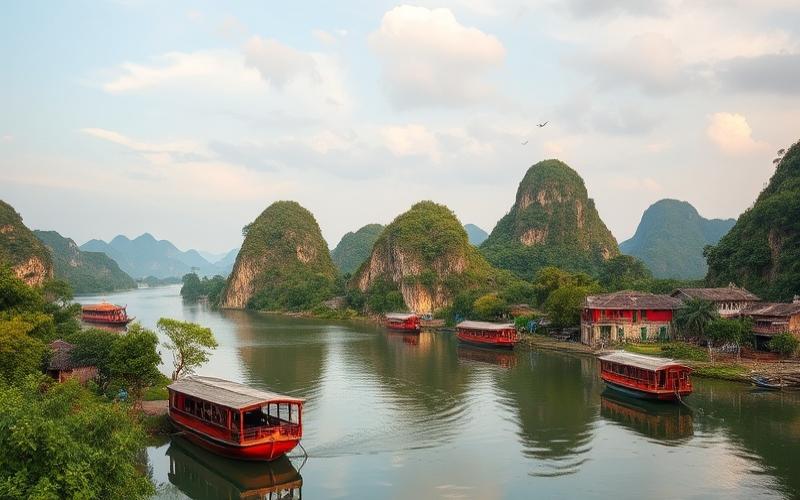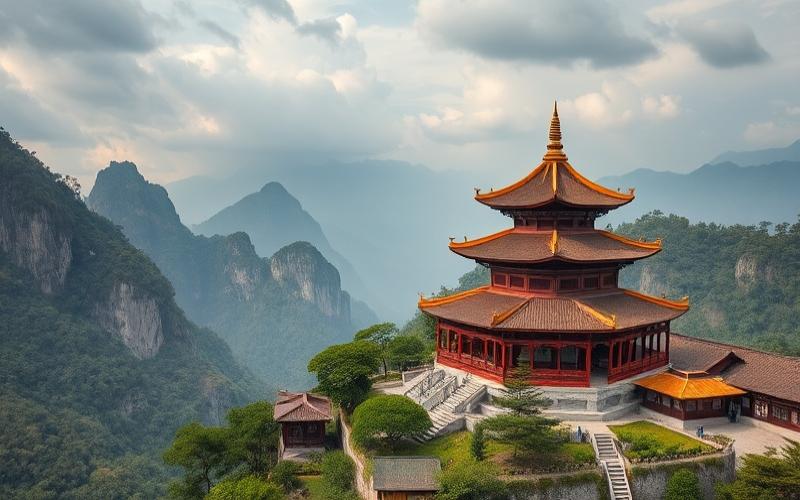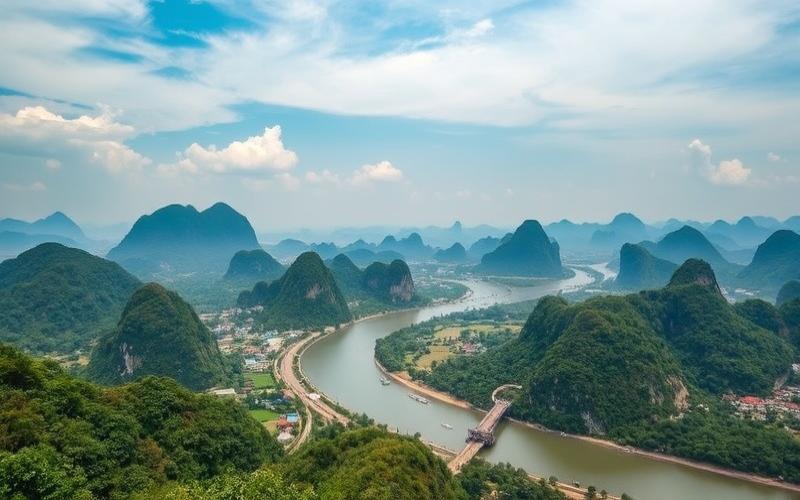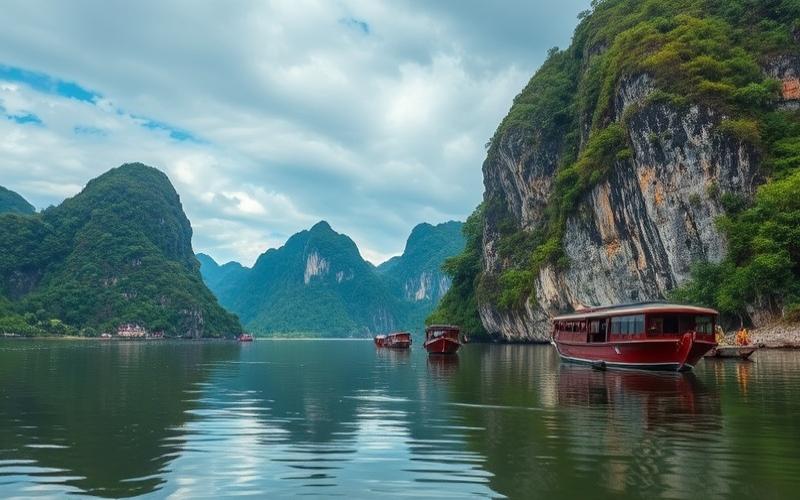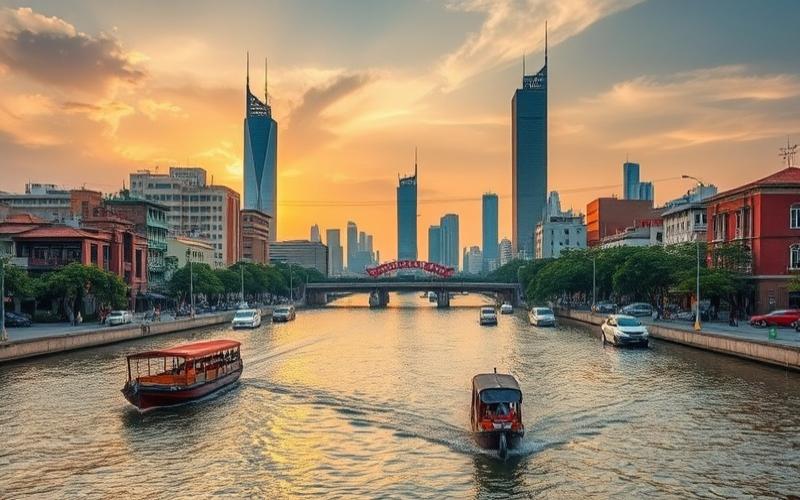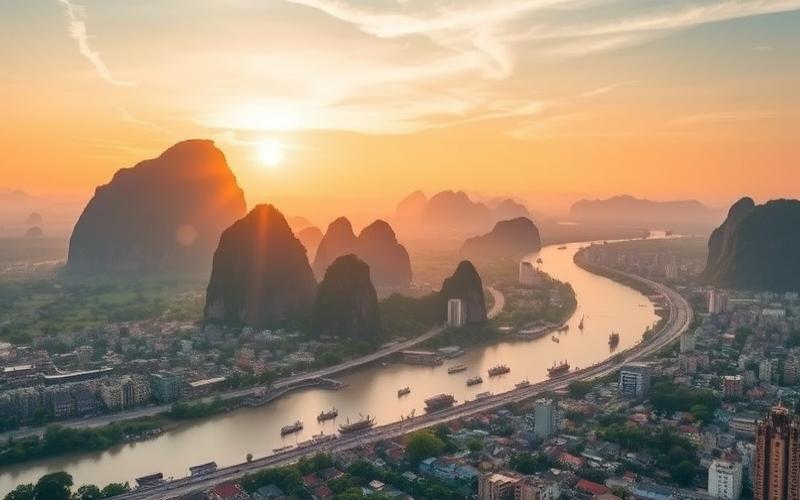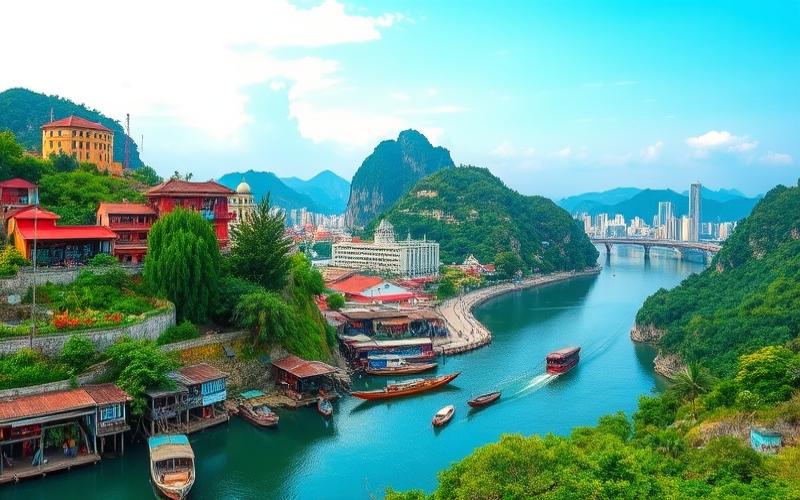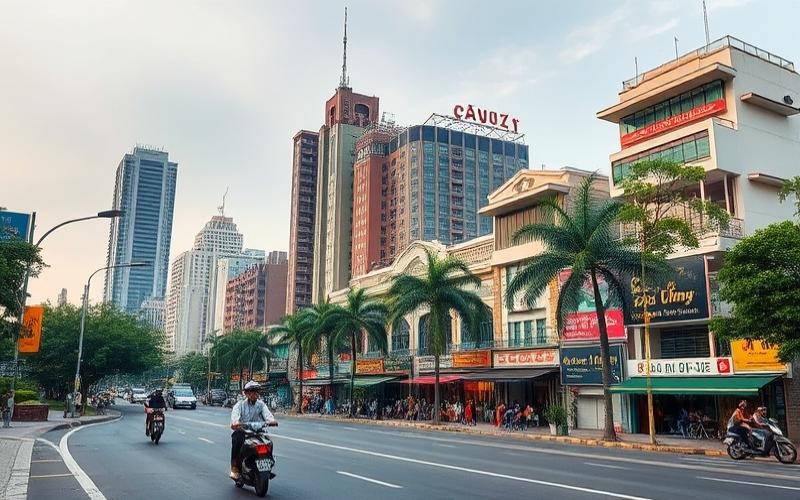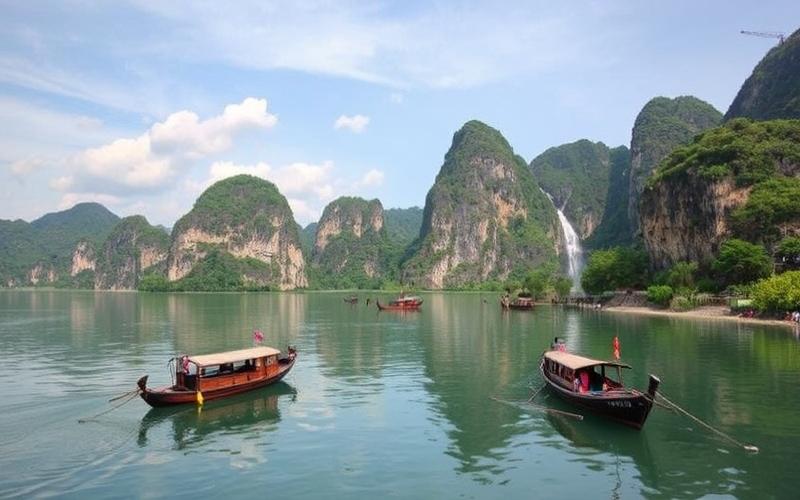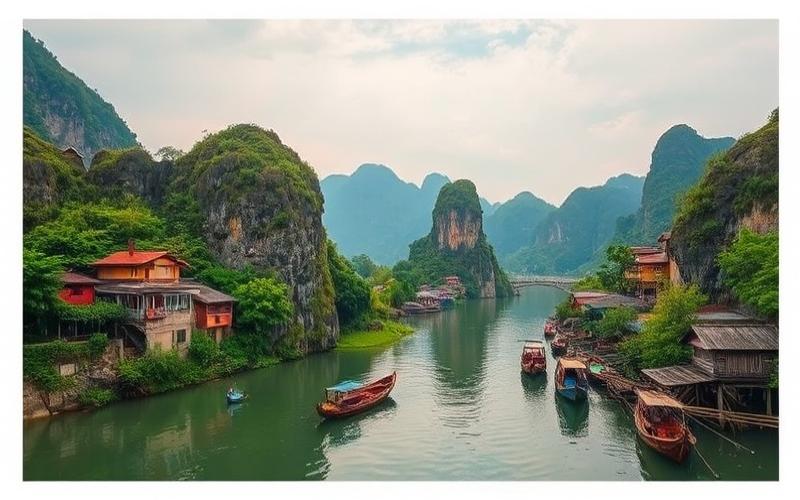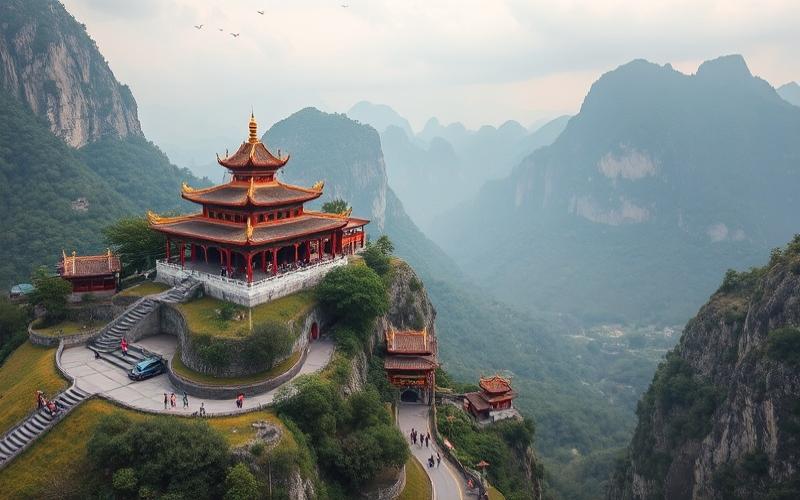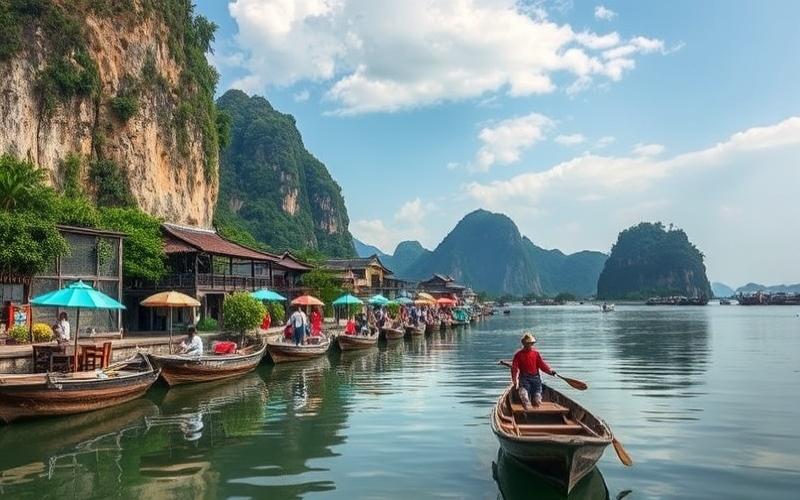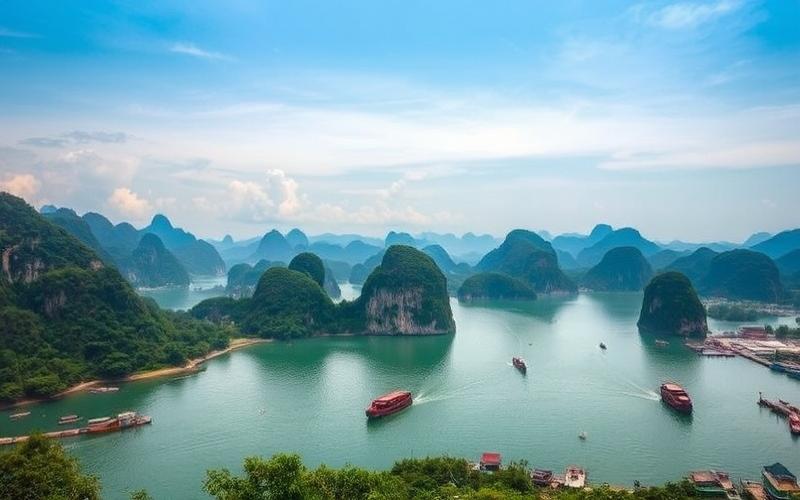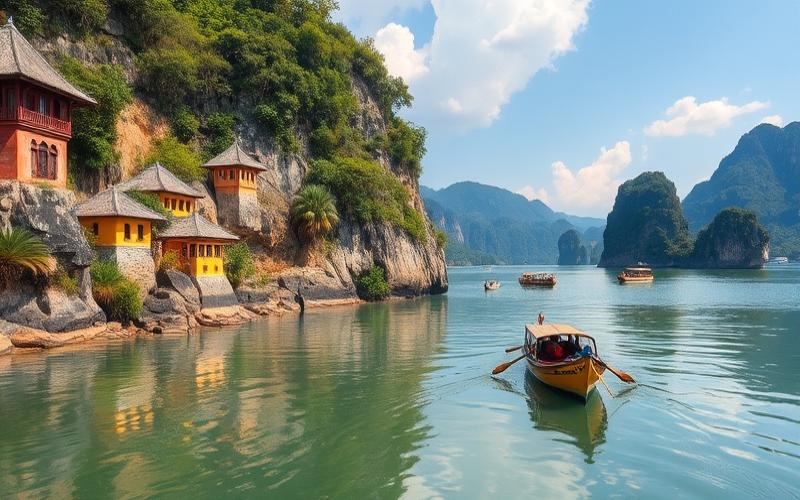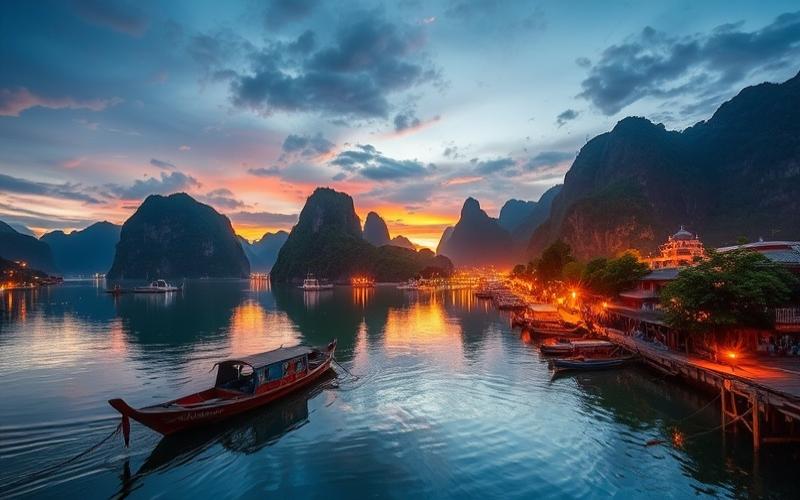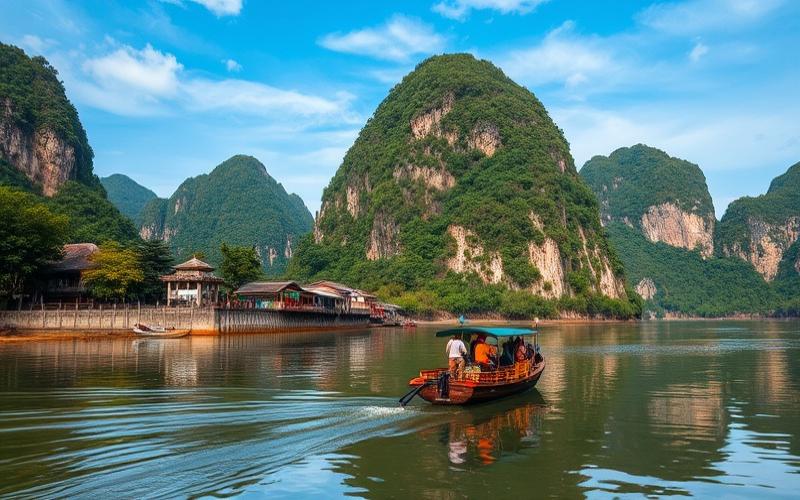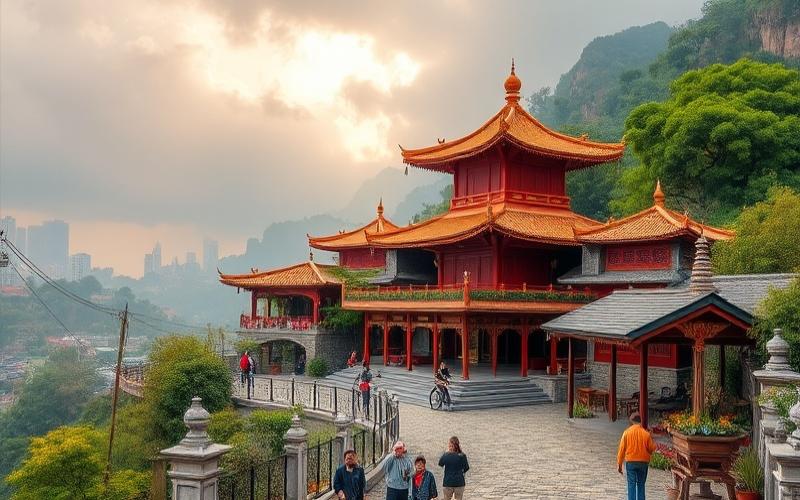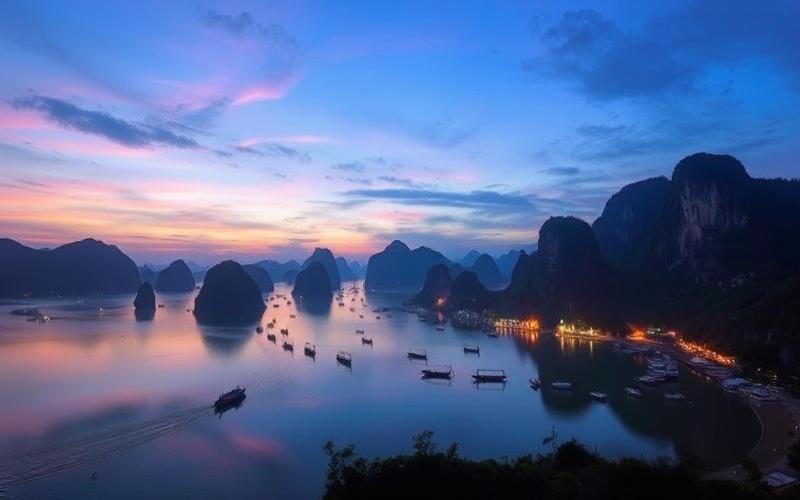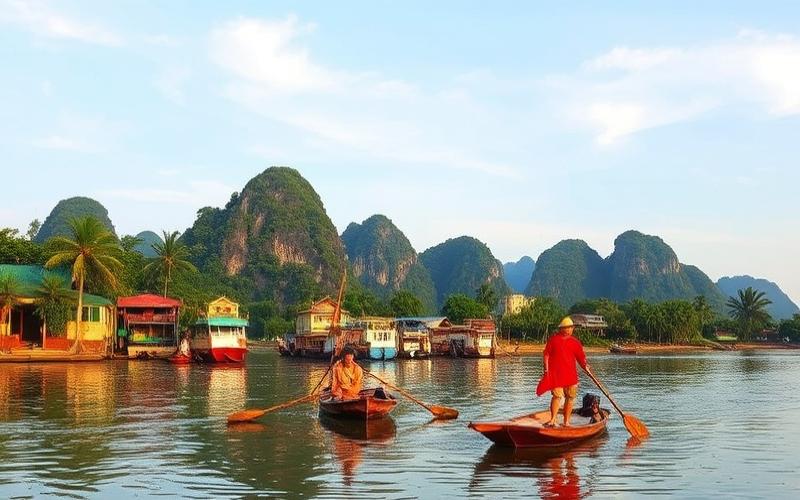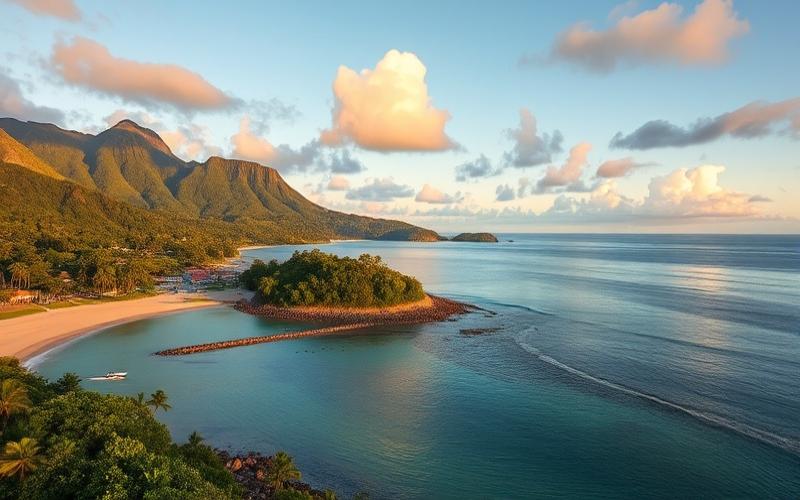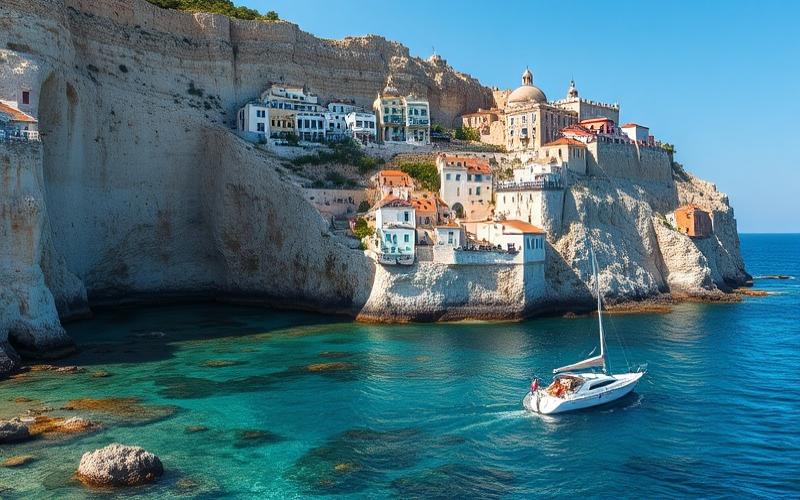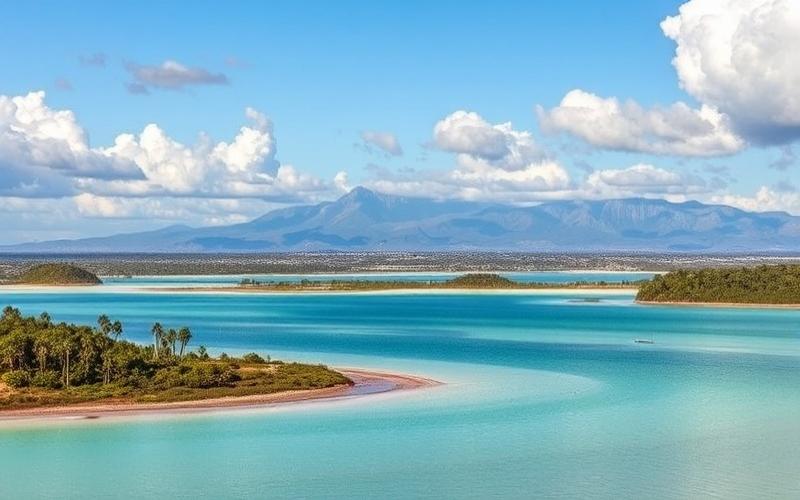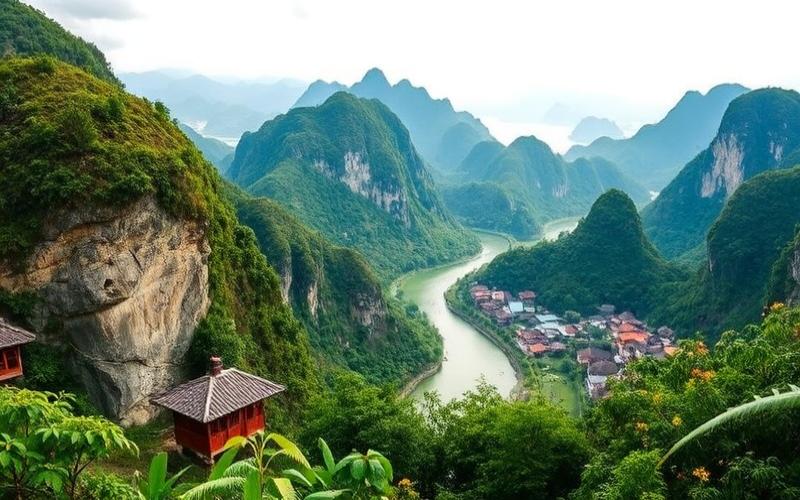
 Published on and written by Cyril Jarnias
Published on and written by Cyril Jarnias
Vietnam, with its breathtaking landscapes and rich culture, has experienced remarkable tourism growth in recent years, transforming the country into a sought-after destination for travelers worldwide. This tourist influx has significantly impacted various industries, particularly the real estate market, which has seen dynamic growth in response to this increased demand.
The phenomenon of rising real estate investments, fueled by interest from foreign and local investors, illustrates how tourism development can influence a nation’s economic fabric.
By analyzing current and future trends, this article explores in depth how Vietnam’s tourism boom is redefining the urban landscape and economic opportunities, while raising essential questions about housing sustainability and accessibility for local residents.
Tourist Regions Transforming Vietnam
Vietnam’s tourism growth is accelerating in several key regions, leading to a profound transformation of the local real estate market. This dynamic is particularly evident in Ha Long Bay, Ho Chi Minh City, Hoi An, and Sa Pa.
| Region | Recent Tourism Growth | Dominant Real Estate Projects | Effects on Real Estate |
| Ha Long Bay | +30% international visitors | Beach resorts, luxury hotels, residential complexes for expatriates and Asian investors | Rising price per m²; strong foreign demand; proliferation of mixed tourism-residential projects |
| Ho Chi Minh City | 65% hotel occupancy (Tet 2025); +87,000 foreign tourists in Jan/Feb 2025 | Luxury residential skyscrapers (Districts 1 & Thu Duc), international hotels, serviced apartments | Continuous price increases (+10-15%/year); influx of foreign investment in urban housing |
| Hoi An | Record attendance in 2024-25 | Eco-resorts, luxury tourist villas | Strong land appreciation (+20%/year in some areas); land pressure on rural zones |
| Sa Pa | 90-95% hotel occupancy during Tet | Massive development of boutique hotels and mountain resorts | Intense real estate speculation; rapid land cost increase (+15%/year estimated) |
Iconic Real Estate Projects:
- Ha Long Bay: Ongoing construction of five-star resorts (Vinpearl Resort & Spa Ha Long), complexes with private marinas.
- Ho Chi Minh City: Proliferation of premium residential towers (Sunwah Pearl), increased development around future metro lines.
- Hoi An: Expansion of eco-friendly beach resorts (Four Seasons The Nam Hai), multiplication of private tourist villas.
- Sa Pa: New international chains established (MGallery Sapa by Accor), residential neighborhoods for domestic investors.
Effects on Prices and Investments
Price per square meter:
- Ha Long Bay: Up to +40% over three years for buildable lots near the waterfront.
- Ho Chi Minh City: Central districts showing between $6,000 and $10,000/m² for new high-end real estate.
- Hoi An: Annual growth exceeding national average in premium coastal sector.
- Sa Pa: Localized doubling near main tourist corridors.
Foreign Investments:
- Flows are predominantly Asian (Singaporean, South Korean) but also European in urban or rural luxury hospitality.
- Several specialized funds are investing heavily in conversion or creation of secondary residences and recreational complexes.
Local Social Implications
Summary list:
- Generalized increase in cost of living, particularly noticeable among:
– Young local professionals sometimes forced to move to rural interior
– Modest families seeing reduced housing access - Forced displacements or financial incentives
– Rural areas absorbed by urban/hotel extensions
– Mass buyouts by private developers - Growing tensions around resources
– Partial saturation during high season
– Increased pressure on public infrastructure
Recent Statistics & Projections
– Vietnam welcomed nearly 17.5 million international visitors in 2024 (+38.9% vs. previous year).
– Record national tourism revenue: 840,000 billion VND, equivalent to +23.8%.
Forecasts:
> According to sector projections for late 2025-early 2026:
> – Continued annual average >+15% for coastal/tourist real estate values,
> – Sustained strong growth (>20%) in total hotel/residential projects launched annually,
> – Expected intensification of foreign direct investments targeting primarily Halong-Hanoi-HCMV-Danang-HoiAn-SaPa.
Good to Know:
Tourism growth in Vietnam’s iconic regions, such as Ha Long Bay, Ho Chi Minh City, Hoi An, and Sa Pa, is driving significant transformation of the local real estate market. Increased visitor demand has fueled the proliferation of real estate projects including luxury hotels, resorts, and even high-end residences. According to recent data, real estate prices in these areas have climbed 10-20% in recent years, attracting substantial foreign investment. In Hoi An, for example, numerous hotel complexes now line the coast to accommodate growing numbers of tourists. However, this tourism surge creates challenges for local residents, particularly regarding displacement and rising living costs. Forecasts indicate these trends are likely to continue, accentuating the contrast between investment-driven value and growing financial pressure on residents.
The rapid transformation driven by tourism growth simultaneously amplifies local land valuation and social pressures—a fragile balance between regional economic dynamism and increased vulnerability for certain local populations facing real estate speculation exacerbated by international influx.
The Soaring Rise of Real Estate Prices
Several factors have led to the rapid rise of real estate prices in Vietnam, with tourism playing a decisive role, particularly in major cities and attractive coastal areas.
Main Factors Behind Rising Real Estate Prices:
- Sustained economic growth and rapid urbanization.
- Limited supply of new residential and commercial projects, while demand continues to increase.
- Development of major infrastructure, such as the opening of metro lines in Ho Chi Minh City, boosting neighborhood attractiveness.
- Increased presence of foreign investors, particularly in high-end and luxury segments.
- Spillover effect from tourism sector on real estate demand, especially in cities with high tourism potential.
Tourism’s Role in Real Estate Dynamics:
- Continuous increase in international visitor numbers, especially in Hanoi, Da Nang, and Ho Chi Minh City.
- Creation of new accommodation needs (hotels, tourist residences, short-term rental apartments).
- Development of real estate projects specifically designed for tourism, increasing pressure on local prices.
| City | Recent Price Growth | International Tourism | Impact on Real Estate Market |
|---|---|---|---|
| Hanoi | Recent decline (-16%) | Strong but stable | Less recent pressure, but sustained demand |
| Da Nang | Moderate increase | Very strong growth | Increased demand for hotels and residences |
| Ho Chi Minh City | Sustained increase (6%/quarter) | Rapid recovery | Strong pressure on supply, rising prices |
Recent Trends and Statistics:
- Between 2015 and 2023, apartment prices in Ho Chi Minh City increased 15-20%; similar growth expected in 2025.
- For 2025, average selling price in Ho Chi Minh City reaches nearly $3,000/m², representing 24% annual increase.
- Over 70% of new 2024 supply consists of high-end projects, pulling the entire market upward.
- Real estate sector revenue represents over 60% of total other business service sectors in Ho Chi Minh City.
Consequences of Tourist Influx:
- Rising prices of residential and commercial properties in key tourist areas.
- Development of tourism-adapted real estate projects (condo-hotels, serviced residences, resorts).
- Strengthening of tourism-related infrastructure, supporting land valuation.
- Arrival of foreign investors seeking to benefit from tourism dynamism and high rental yields.
Economic and Social Implications for Local Population:
- Decreased housing accessibility for modest households.
- Increased cost of living in tourist neighborhoods.
- Tensions in rental market, particularly for youth and local workers.
- Risk of speculation and real estate bubble formation in certain neighborhoods.
Key Takeaways:
- Tourism boom increases pressure on real estate, especially in major cities and coastal hubs.
- Rapid real estate price increases benefit investors but weaken housing access for part of the population.
- Authorities attempt to regulate the market, but supply remains limited against demand driven by economic and tourism dynamism.
Rising Real Estate Prices in Vietnam: Main Drivers
- Growth of international tourism
- Infrastructure development
- Limited supply of new projects
- Massive foreign investments
- Speculation and rise of high-end projects
Social Consequences:
- Gradual exclusion of local residents from real estate market in tourist centers
- Risk of gentrification and social imbalance
- Need for public policies to promote affordable housing access
Good to Know:
In Vietnam, the rapid increase in real estate prices is largely fueled by the rise in tourism, which has seen significant influx of international visitors, particularly in cities like Hanoi, Da Nang, and Ho Chi Minh City. In 2023, the country welcomed nearly 18 million tourists, a figure that stimulated demand for real estate properties, both residential and commercial. Foreign investors, seeing profitability potential, inject significant capital into real estate development and infrastructure projects, thereby attracting more interest around tourist areas. Beyond price increases, this situation raises housing accessibility issues for local residents whose salaries don’t keep pace with soaring costs. To meet this growing demand, several urban expansion projects are underway, but these developments risk increasing pressure on local resources and widening the economic gap between wealthy residents and less affluent communities.
Flourishing Rental Investment Opportunities
Vietnam Regions with High Rental Potential Thanks to Tourism
- Ho Chi Minh City (Saigon): Economic capital, strong urban rental demand, high price per square meter but attractive yields.
- Da Nang: Coastal city in full expansion, prized for its beaches and connectivity.
- Nha Trang: Major beach destination with rapid growth in tourism offerings.
- Phu Quoc: Highly touristic island, accelerated development of hotel and leisure infrastructure.
- Other areas to watch: Haiphong (port city), Bac Giang and Bac Ninh (proximity to industrial hubs).
International tourism is expanding rapidly, with a target of 28 million foreign visitors by 2025. This dynamic increases demand for seasonal rentals in major destinations.
Current Rental Demand Trends in Tourist Areas
Tourists primarily seek:
- Modern apartments, ideally located in city centers or near major attractions
- Houses or individual villas, often preferred by families or groups seeking privacy and space
- Serviced residences (pool, security, concierge)
Preferences vary by profile:
| Property Type | Target Tourists | Preferred Location |
|---|---|---|
| Apartment | Young couples/expats | Urban centers/Ho Chi Minh City |
| House/Villa | Families/groups | Beach areas/Phu Quoc/Nha Trang |
| Serviced Residence | Business travelers/long-stay tourism | Da Nang/Ho Chi Minh |
Recent Tourist Real Estate Market Statistics
| Destination | Rental Occupancy Rate (%) | Estimated Gross Yield (%) | Average Price/m² (USD) |
|---|---|---|---|
| Ho Chi Minh City | 75–85 | 5–7 | 3,000–6,000 |
| Da Nang | 70–80 | ~6 | ~2,500 |
| Nha Trang | Up to 80 | >6 | ~2,200 |
| Phu Quoc | Up to 85 | >7 | – |
Occupancy rates are particularly high during peak season, especially along the coast. Gross profitability ranges around 5 to over 7% depending on location, remaining competitive compared to neighboring markets.
Infrastructure Impact on Attractiveness
Ongoing development of:
- International airports (Phu Quoc, Da Nang)
- Highway networks connecting coastal cities and major metropolises
- New railway lines/urban metro in Ho Chi Minh City
These investments facilitate access to major tourist destinations and directly stimulate real estate value and tourist traffic. The upcoming metro arrival in certain upscale neighborhoods increases their attractiveness for both investors and tenants.
Good to Know:
Vietnam’s regions of Da Nang, Nha Trang, and Phu Quoc have become major tourist hubs, offering extremely lucrative rental investment opportunities. In Da Nang, demand for modern apartments is strong, while Nha Trang and Phu Quoc attract tourists seeking villas and vacation homes. In 2022, occupancy rates in these areas reached 75%, with average rental yields of 8%. Real estate prices increased approximately 10% over the year, supported by improved transportation and leisure infrastructure. Investors should pay attention to local regulations, particularly regarding foreign ownership, often limited to 50-year leases. Rapid development of associated services, such as leisure complexes and international airports, enhances these locations’ appeal for investments.
Foreign investors can purchase real estate in Vietnam as long as they hold a valid visa—even a simple tourist visa. However:
- They can only acquire certain types of residential properties (“condominiums”, individual houses not located on agricultural land…).
- Ownership is typically granted as renewable leasehold for a maximum initial term typically up to fifty years.
- There is a maximum quota set at approximately 30% of available apartments in each collective project that can be owned by foreigners.
Investors are advised to:
- Carefully verify the land title (“pink book”)
- Work with a local specialized lawyer to avoid any future regulatory or tax disputes.
Summary List – Key Points Before Investing:
- Verify if the project legally permits short-term/seasonal rental
- Learn about any local restrictions regarding maximum number of foreign owners
- Inform yourself about tax regime applicable to income generated through seasonal rental
Vietnam’s tourism dynamism combined with accelerated infrastructure development creates fertile ground for rental investment in several key regions of the country. However, legal vigilance remains essential before any acquisition intended for short-term rental.
Disclaimer: The information provided on this website is for informational purposes only and does not constitute financial, legal, or professional advice. We encourage you to consult qualified experts before making any investment, real estate, or expatriation decisions. Although we strive to maintain up-to-date and accurate information, we do not guarantee the completeness, accuracy, or timeliness of the proposed content. As investment and expatriation involve risks, we disclaim any liability for potential losses or damages arising from the use of this site. Your use of this site confirms your acceptance of these terms and your understanding of the associated risks.

